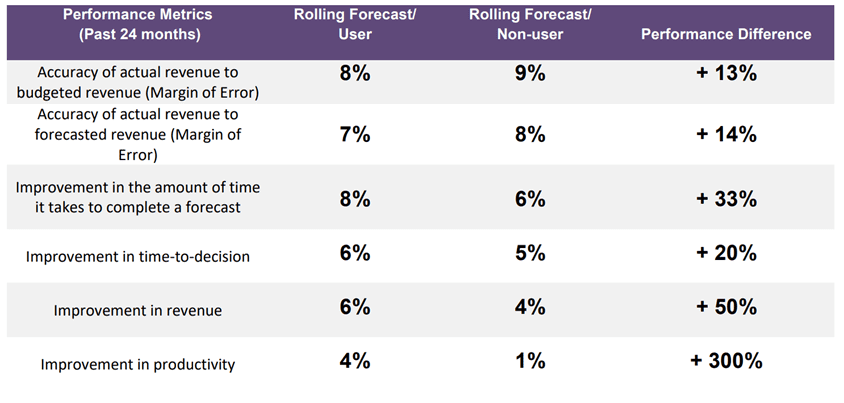Making the right financial decisions in higher education begins with trust. Why trust? Because success in higher education is a team effort. Plus, too many things are simply out of your individual control since today’s environment is one of constant change. Politics, public health, revenue disruptions, and workforce challenges all play a part in your daily operations. As a leader in a complex organization who wants to get things done, you must have confidence in your team’s character and ability. That confidence is the very definition of trust. And it’s also why financial forecasting software is mission critical – it gives you trust in your numbers.
The Benefits of Trust
The benefits of trust can be easily seen in how your team is affected:
- Trust empowers your team to think and communicate freely. The sharing of new ideas and engaging in healthy discussion over the merits are important to institutional progress. Trust allows these conversations to happen. And teams that trust each other have discussions and debates on any issue, no matter how difficult.
- Trust creates an environment of transparency. Effective teamwork means relying on other people to complete large projects and solve issues. Trust enhances transparency by reducing the fear of judgment. In turn, individual contributors are free to complete tasks, and if issues arise, trusting teams bring those issues to the forefront and address them.
- Trust inspires collaboration. Working as part of a team becomes enjoyable when it’s easy to communicate. When there’s a common goal. When everyone is held accountable. And when there’s no negative energy to constrain the team. Not to mention, people love to collaborate with people they like, and it’s easier to like your team if it’s built on a foundation of trust.
Yet all those benefits don’t automatically transfer to other areas. Trusting your team is one thing – but what if you don’t trust your numbers?
Relevance Has a Need for Speed
Accuracy in your numbers is necessary, but relevance is what shapes future financial decisions. Your team spends a lot of time and effort pulling and combining data to produce financial plans, budgets, reports, and presentations that communicate where you are and where you’re going. But financial documents delivered on a set schedule are no longer good enough. Those documents must also be relevant.
One of the hurdles to effective planning and budgeting, and the biggest obstacle to numeric relevance, is ensuring that today’s challenges are considered as you move forward through the rest of the year and into long-range plans. Is your information stale by the time it reaches the board/committee? After all, it’s hard to charge forward when you’re always waiting. And if you spend too much time looking backward, it may be time to look at how budgeting and forecasting software can push you forward.
What’s the bug in this system? Well, it’s time. Keeping your numbers relevant simply takes too much time.
How, then, do you add relevance to the equation? How do you ensure you’re tying current activity to future plans? Rolling forecasts are the perfect solution. Agile, iterative, and consistent forecasting is the cornerstone for building a foundation of relevance and trust in your numbers within financial forecasting software.
As Situations Change, So Should Your Actions
Static budgets built within legacy financial forecasting software aren’t flexible enough to react to what’s happening in real-time. Meanwhile, rolling forecasts are designed to change and adapt throughout the year, providing more value if large and/or sudden changes negatively affect your institution.
Rolling forecasts (see Figure 1) are dynamic, just like your daily operations, and continually adapt and update your planning processes against actual performance and trends. How? Rolling forecasts allow for more accurate and multifaceted forecasting by re-calibrating the forecast based on changes in both internal variables (e.g., mergers and tuition changes) and external factors (e.g., changing state contributions, public health, and demographic changes).

Rolling forecasts are a management tool that enables institutions to continuously plan (i.e., forecast) over a set time horizon vs. a calendar or fiscal year. For example, in a 12-month forecast period, as each month ends, another month will be added. In other words, you’re always forecasting 12 months into the future.
Best practice is to ensure rolling forecasts can extend (e.g., roll) beyond the current calendar or fiscal year-end. Most commonly, rolling forecasts contain a minimum of 12 forecast periods but can also include 18, 24, or more periods depending on the needs and complexity of the organization.
Why Rolling Forecasts Are Important for Higher Education
The ability to quickly make decisions and implement them with financial forecasting software in near real-time is critical for any institution to survive and thrive into the future. As discussed above, accuracy and relevancy, as it relates to the context of time, are both important. And rolling forecasts enhance both. You’ll see improvements in accuracy, and you’ll deliver faster – improving relevancy.
Need some proof? Figure 2, a chart from Aberdeen’s “You Can’t Afford to be Static: Rolling with the Punches in Forecasting” report is full of some pretty amazing results. Here are the 3 that stand out the most:
- 14% increase in forecast accuracy
- 33% decrease in preparation time
- 300% improvement in productivity

OneStream Unifies Rolling Forecasts with Actuals Across the Enterprise
So how do you do it? How do you get started or move faster toward the adoption of effective rolling forecasts? How do you unify the past while looking to the future? Well, the multi-level approach that lets you do all of that is exactly what OneStream was designed to do.
Our Intelligent Finance Platform consolidates and pre-populates rolling forecasts with actuals the moment that the actuals have been certified. And there you go – you’ve now got a simultaneous view of the past that’s in the moment while looking to the future. OneStream even dynamically updates standard reports using the most current forecast. This functionality drastically cuts down the time and energy that your FP&A team will need to spend generating reports, making it much easier to iteratively forecast.
Learn More
As your team begins its rolling forecast journey toward organizational agility, data relevance, and trust, download our Unify Connected Planning Whitepaper to learn more. And if you’re ready to make the leap from static planning to agile forecasting, contact OneStream today!
Get Started With a Personal Demo



